“In pilgrimage, a miqat is a designated location where pilgrims are required to enter the state of ihram—a sacred condition of purity and intention—before continuing their journey. If this requirement is overlooked, expiation (damm), typically through animal sacrifice, is necessary to atone for the lapse. In honor of the sanctity of the rituals and in obedience to the command of Allah and His Messenger ﷺ.”
Table of Contents
Introduction
Ever packed for a trip and realized you forgot something essential? For pilgrims embarking on the spiritual journeys of Hajj or Umrah, there’s one thing you absolutely cannot forget to “put on” before a specific point: your ihram. But where exactly does this happen? Enter the miqats—those crucial spiritual boundaries that mark the beginning of your sacred journey.
Imagine you’re on a flight to Saudi Arabia, excited and nervous, and suddenly the pilot announces, “We are approaching the miqat.” Everyone around you starts changing into simple white garments. There’s a palpable shift in the atmosphere—a collective deep breath before the dive into devotion. That’s the power of the miqat. It’s not just a geographical line; it’s a portal to a spiritual realm.
In this guide, we’ll walk you through everything you need to know about the miqats: what they are, why they matter, and how to navigate them seamlessly. Whether you’re a first-time pilgrim or refreshing your knowledge, consider this your friendly companion for understanding one of the most foundational aspects of Hajj and Umrah.
What Exactly Is a Miqat?
Let’s start with the basics. The word “miqat” (plural: mawaqit) comes from the Arabic root meaning “to determine” or “to appoint.” In the context of pilgrimage, it refers to designated locations where pilgrims must assume the state of ihram—a sacred state of purity and intention—before proceeding further. Think of it as spiritual airport security: you can’t board the flight to divine proximity without passing through this checkpoint.
But why are these boundaries so important? Historically, these points were established to ensure that pilgrims entered the holy precincts of Makkah with the right mindset and preparation. Crossing a miqat without being in ihram requires expiation (damm), such as sacrificing an animal, to atone for the oversight. This rule underscores the seriousness of the pilgrimage and the reverence owed to the sacred journey.
There are two types of miqats:
- Miqat Zamani (Temporal Boundary): This refers to the specific time during which Hajj can be performed—the months of Shawwal, Dhul-Qadah, and the first ten days of Dhul-Hijjah. Umrah, however, can be performed any time of the year except for the days of Hajj.
- Miqat Makani (Spatial Boundary): These are the physical locations we’ll focus on in this guide. They are fixed points based on the direction from which pilgrims approach Makkah.
What’s The Historical Roots of the Mawaqit?
The miqats aren’t arbitrary; they were defined by Prophet Muhammad (peace be upon him) himself, with one addition by his companion Caliph Umar ibn al-Khattab. According to a well-known hadith narrated by Abdullah ibn Abbas:
Allah’s Messenger (pbuh) fixed Dhul Hulayfah as the Miqat for the people of Madinah; al-Juhfah for the people of Sham; and Qarn al-Manazil for the people of Najd; and Yalamlam for the people of Yemen. So, these are the Mawaqit for all those living in those places, and besides them for those who come through those places with the intention of performing Hajj and Umrah. Sahih al-Bukhari 1526
Later, when Muslims from newly conquered regions like Iraq found it difficult to reach the designated miqat, Caliph Umar responded to their needs by establishing Dhat Irq as an additional miqat according to this hadith narrated by Ibn `Umar:
When these two towns (Basra and Kufa) were captured, the people went to `Umar and said, “O the Chief of the faithful believers! The Prophet (ﷺ) fixed Qarn as the Miqat for the people of Najd, it is beyond our way and it is difficult for us to pass through it.” He said, “Take as your Miqat a place situated opposite to Qarn on your usual way. So, he fixed Dhatu-Irq (as their Miqat).” Sahih al-Bukhari 1531
This historical adaptability shows how the rules of Hajj and Umrah balance fixed principles with practical considerations for pilgrims.
What Are The Five Miqats and Who Uses Them?
Here’s where it gets practical. Depending on where you’re coming from—whether you’re traveling from the United States, Pakistan, or Nigeria—you’ll have a specific miqat assigned to you. Let’s break them down:
| Miqat (Name) | Serves Pilgrims From… | Location / Distance |
|---|---|---|
| Dhul-Hulayfah (Abyar Ali) | Medina and all points north of Mecca | Near Medina (~9 km from Madinah; 410 km north of Makkah) |
| Al-Juhfah (Rabigh) | Syria (Ash-Sham), Egypt, Europe, etc. (NW) | Rabigh, ~182 km NW of Mecca |
| Qarn al-Manazil (Al-Sayl) | Najd (central Arabia) and east (Pakistan, etc.) | ~80–90 km east of Mecca, near Ta’if |
| Dhat Irq | Iraq, Iran, and northeast regions | ~85–90 km northeast of Mecca |
| Yalamlam (Al-Sa’diyah) | Yemen and southern countries (by sea, etc.) | ~50–100 km south of Mecca |
1. Dhul Hulayfah (Abyar Ali)

- Location: About 18 km southwest of Madinah and 410 km north of Makkah.
- For: Pilgrims coming from or through Madinah, as well as those approaching from the north. This includes many travelers from North America and Europe who visit Madinah first.
- Fun Fact: This is the farthest miqat from Makkah, making it a common starting point for those who combine a visit to Madinah with their pilgrimage.
2. Al-Juhfah (Rabigh)

- Location: Approximately 182 km northwest of Makkah.
- For: Pilgrims from Syria, Egypt, Turkey, Europe, North America, and several African countries. In modern times, many pilgrims use Rabigh, a town near the original site.
- Historical Note: This was the miqat for the people of “Sham,” which historically included parts of the Levant.
3. Qarn al-Manazil (Al-Sayl)
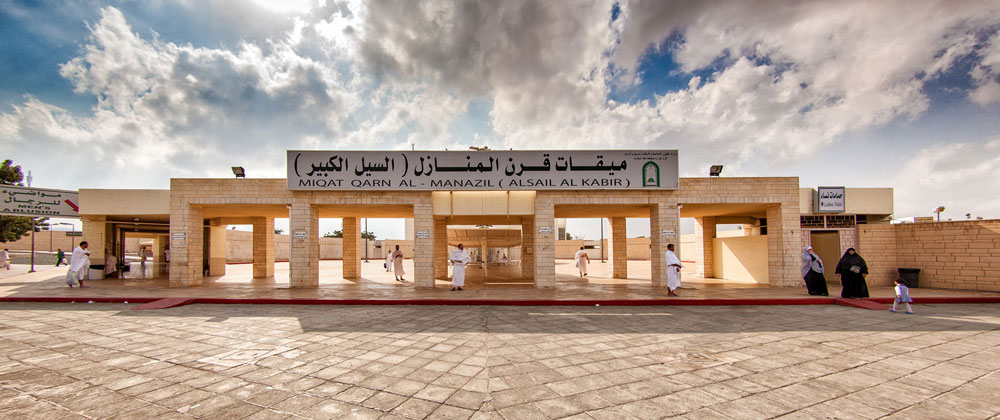
- Location: About 80 km east of Makkah, near Ta’if.
- For: Those from Najd (central Saudi Arabia), the UAE, Oman, Pakistan, Australia, Malaysia, Singapore, and similar regions.
- Modern Setup: This miqat has facilities like a large mosque, bathing areas, and parking spaces to accommodate pilgrims.
4. Dhat Irq
- Location: Roughly 90 km northeast of Makkah.
- For: Pilgrims from Iraq, Iran, China, Russia, and Central Asia.
- Origin Story: Added by Caliph Umar for travelers from Iraq and beyond.
5. Yalamlam (Al-Sadiah)
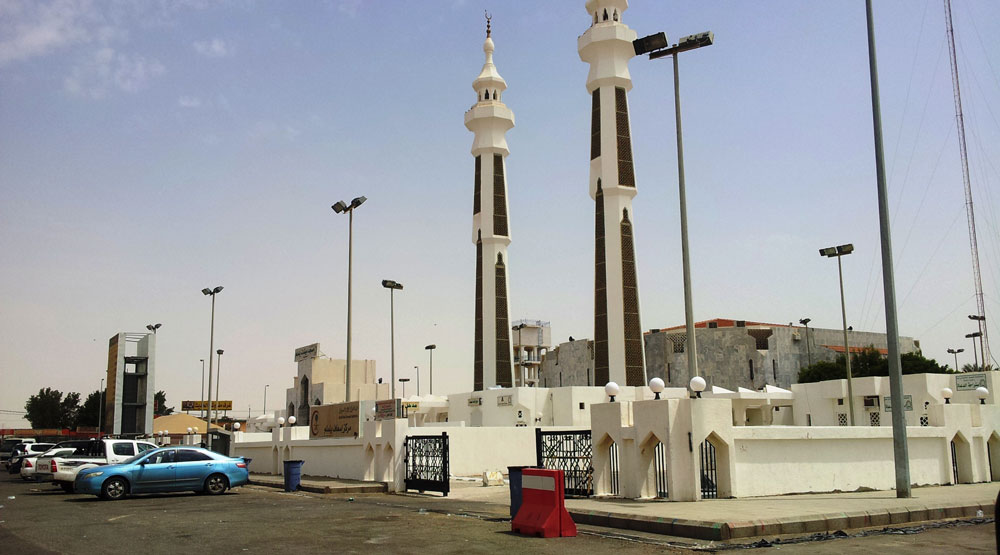
- Location: About 100 km south of Makkah.
- For: Those from Yemen, South Africa, Nigeria, and other southern regions, as well as travelers from South Asia like India and Indonesia.
- Trivia: This miqat is nestled in a mountainous area and has historically been used by traders from the Indian subcontinent.
What If You Live Inside the Miqat? Understanding Al-Hil and Haram
Not everyone starts their journey from afar. If you’re already inside the miqat boundary, don’t worry—the rules have you covered.
The area between the miqats and the Haram (the sacred precinct of Makkah) is called Al-Hil. Residents of cities like Jeddah fall into this category. They can enter ihram from their homes or any location within Al-Hil, but they must do so before crossing into the Haram boundary.
The Haram itself is a sacred zone with specific rules: hunting, cutting plants, fighting, or carrying weapons is prohibited here. If you’re in Makkah and want to perform another Umrah, you must go to a point outside the Haram, like Masjid Aisha (Tan’im), to enter ihram again. This mosque is about 8 km from the Kaaba and is a popular spot for pilgrims seeking to perform multiple Umrahs.

Navigating the Miqats Today
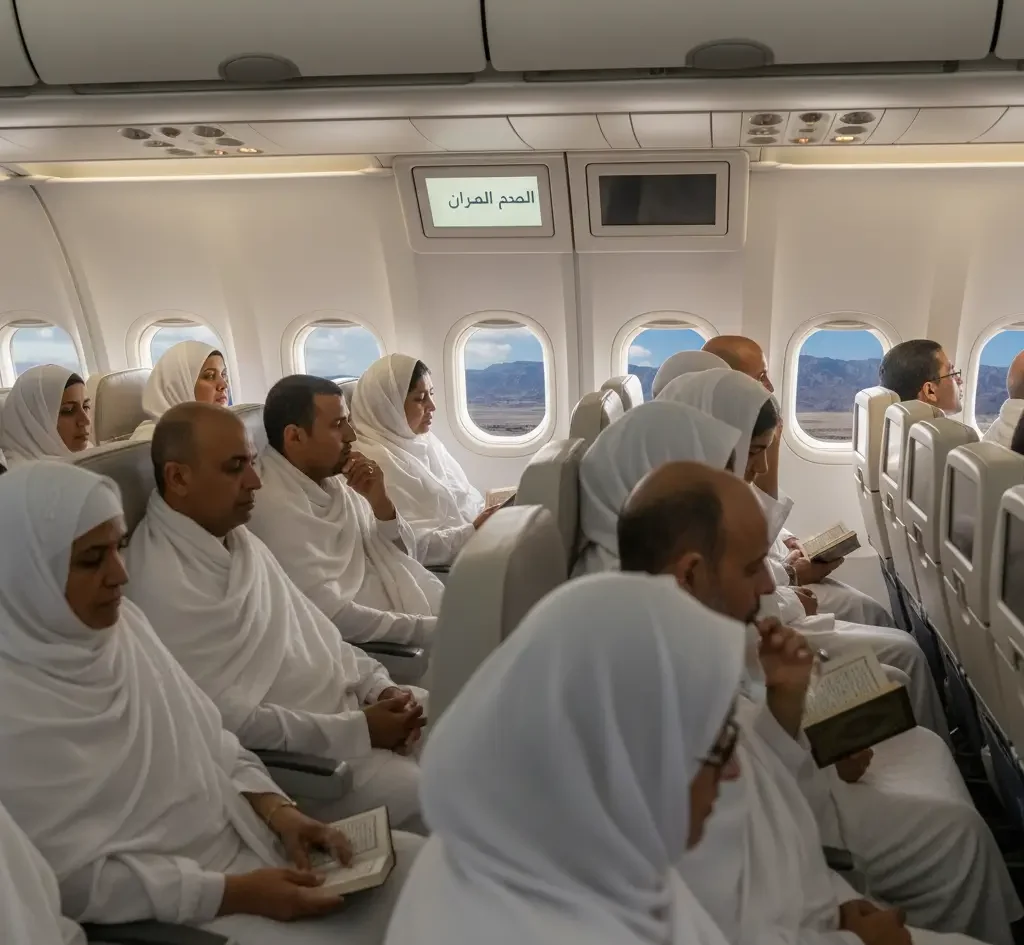
By Air
If you’re flying to Saudi Arabia, most airlines will announce when they’re approaching the miqat. Islamic airlines like Saudia often have prayer facilities and guidance, but even on non-Islamic airlines, you can prepare:
- Change at the airport: Many pilgrims prefer to wear their ihram at the departure airport or during a layover.
- Intention (niyyah): Make your intention verbally and internally as you cross the miqat.
- Talbiyah: Immediately after your intention, recite the Talbiyah: “Labbayka Llāhumma labbayk…” This marks your official entry into ihram.
By Land
- From Madinah: Buses or cars will stop at Dhul Hulayfah.
- From Jeddah: While Jeddah is not a miqat, residents or visitors can enter ihram there if they are not passing any miqat. However, if you’re flying into Jeddah, you should have entered ihram before passing your assigned miqat.
Some Practical Tips for Pilgrims

Navigating these rules is easier with some planning:
- Pack Ihram before the trip. Aim to don Ihram before reaching any Miqat. Many travelers change into Ihram at home or in the airport before departure. Airlines often lack full facilities for changing en route.
- Flying to Saudi Arabia. If you arrive by air (e.g. to Jeddah), put on Ihram before takeoff or as soon as possible. Islamic airlines commonly announce the approaching Miqat (usually about 10–20 minutes before) so pilgrims can change. Non-Islamic carriers rarely do this, so make sure you’re ready early.
- Follow Ihram etiquette. Once in Ihram, certain acts (cutting hair, wearing perfume, etc.) are prohibited until the rites are complete. Plan accordingly – for example, finish any grooming before Miqat.
- Don’t cross Miqats incorrectly. If you accidentally cross a Miqat without Ihram, Islamic law requires an expiatory sacrifice (damm). If you realize before crossing, pause and change. For passengers on a plane, 30 minutes’ notice is often given to allow changing into Ihram.
- Special note for Makkah residents: If you live in Mecca and are doing Umrah only, remember to go out to Tan‘īm (Masjid Aisha) or another outlying Miqat and enter Ihram there. If you are doing Hajj (or Hajj+Umrah), you may assume Ihram from inside the city as usual.
- Check local guidance. Approved Hajj authorities and travel guides often provide maps of Miqat locations. For example, the Saudi Ministry of Hajj website shows the five Miqats on a map. Use these to plan your route (especially if traveling by road through different regions). (Source: hajjumrahplanner.com, islamqa)
By remembering these points and consulting local guides, you can ensure that you enter Ihram at the correct place and your pilgrimage remains valid.
What’s The Spiritual Significance of Miqats: More Than Just a Boundary
Beyond the rules, the miqat represents a profound spiritual transition. It’s where you shed your everyday clothes—and by extension, your worldly identity—to become equal before Allah. The simple white garments of ihram erase distinctions of wealth, status, and nationality, embodying the unity of the Muslim Ummah.
As you recite the Talbiyah—“Labbayk Allahumma labbayk…”—you’re answering a divine call. This moment has been repeated by millions of pilgrims throughout history, connecting you to a chain of faith that spans centuries.
Saudi Arabia’s Efforts to Enhance the Miqat Experience
Saudi Arabia has been upgrading the miqat sites to improve the pilgrim experience. For example, Qarn al-Manazil is undergoing expansions to handle traffic better and provide more amenities. These efforts are part of a broader vision to accommodate growing numbers of pilgrims and ensure their journey is smooth and spiritually fulfilling. (Source: Kingdom upgrades Miqat gateways for pilgrims | Arab News)
Conclusion: Your Journey Begins at the Miqat
In summary, the Miqats are the named boundary stations around Mecca where pilgrims must enter Ihram before performing Hajj or Umrah. There are five main Miqats – Dhul-Hulayfah (north), Juhfah (NW), Qarn al-Manazil (east), Dhat Irq (NE), and Yalamlam (south) – each serving travelers from those directions. Understanding and respecting these boundaries is crucial: crossing without Ihram invalidates the rites. Special rules apply to locals and repeat pilgrimages (notably the use of Masjid Aisha/Tan‘īm).
By planning your Ihram change at the right Miqat and following the guidelines above, you’ll set out on your holy journey properly attired and spiritually prepared.
May your journey be accepted, and may you cross the miqat with a heart full of devotion and peace. If you have any questions or experiences to share, we’d love to hear them in the comments below or you can join our community!

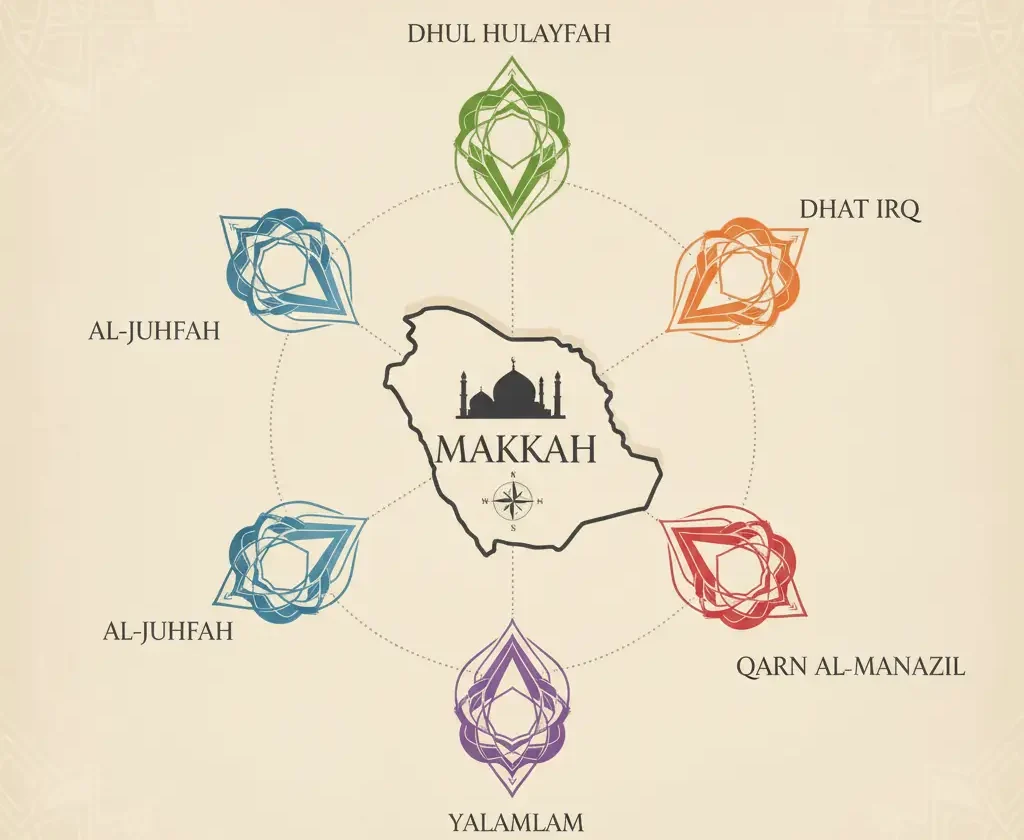

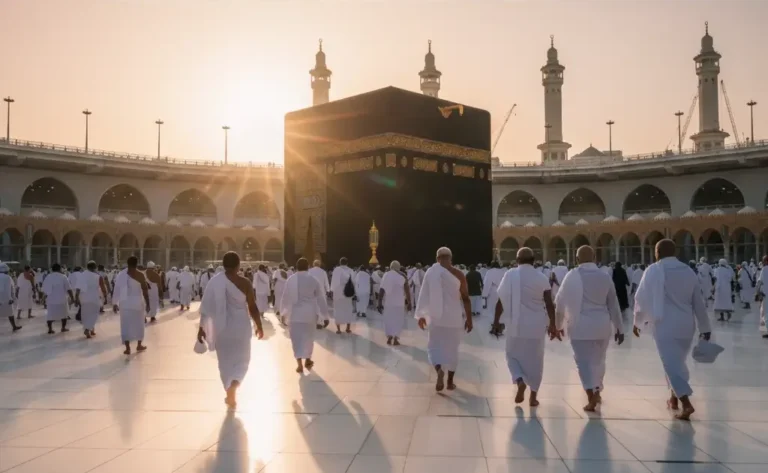
Perfectly pent articles, thanks for information .